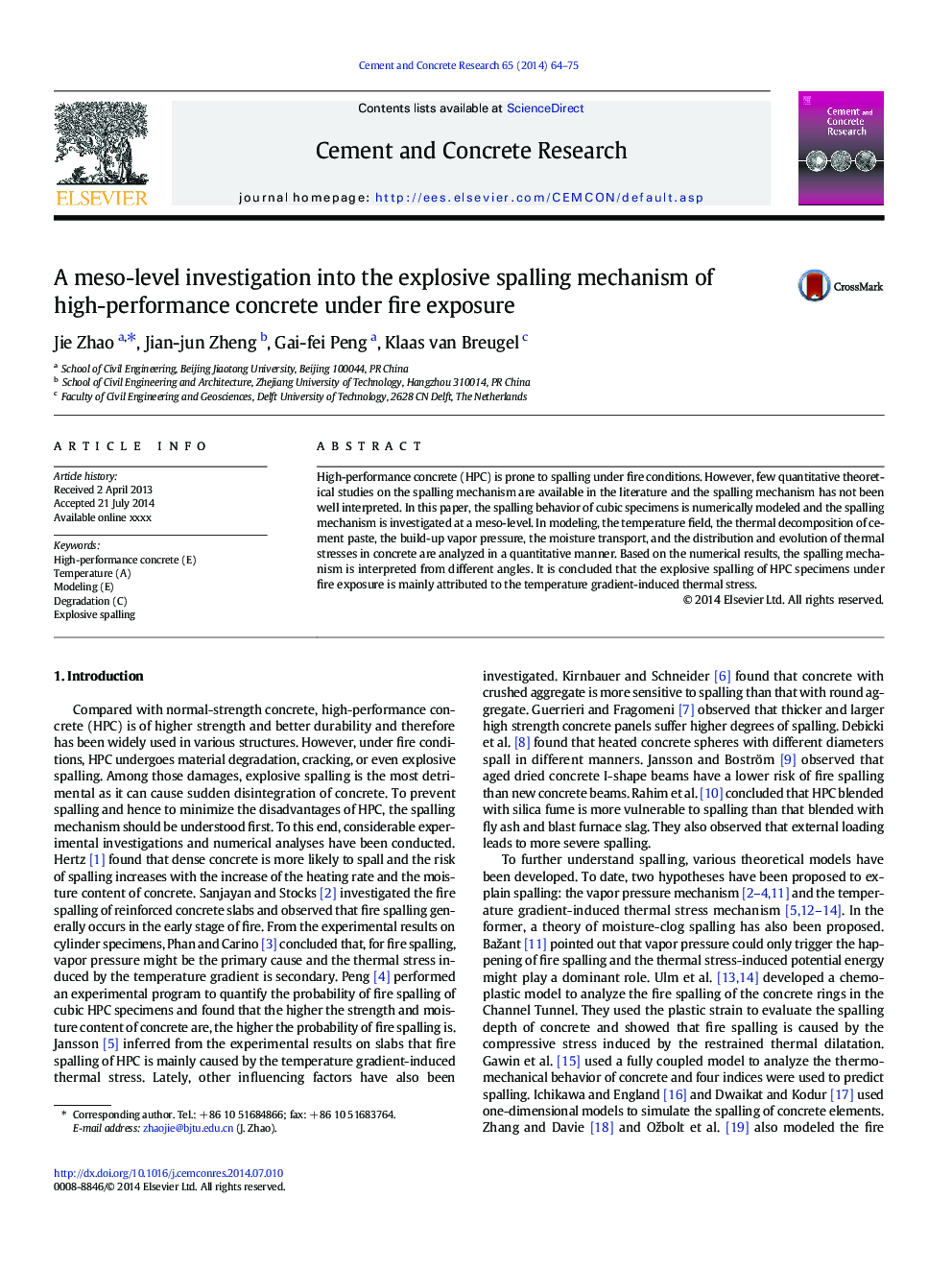| Article ID | Journal | Published Year | Pages | File Type |
|---|---|---|---|---|
| 7885454 | Cement and Concrete Research | 2014 | 12 Pages |
Abstract
High-performance concrete (HPC) is prone to spalling under fire conditions. However, few quantitative theoretical studies on the spalling mechanism are available in the literature and the spalling mechanism has not been well interpreted. In this paper, the spalling behavior of cubic specimens is numerically modeled and the spalling mechanism is investigated at a meso-level. In modeling, the temperature field, the thermal decomposition of cement paste, the build-up vapor pressure, the moisture transport, and the distribution and evolution of thermal stresses in concrete are analyzed in a quantitative manner. Based on the numerical results, the spalling mechanism is interpreted from different angles. It is concluded that the explosive spalling of HPC specimens under fire exposure is mainly attributed to the temperature gradient-induced thermal stress.
Related Topics
Physical Sciences and Engineering
Engineering
Industrial and Manufacturing Engineering
Authors
Jie Zhao, Jian-jun Zheng, Gai-fei Peng, Klaas van Breugel,
